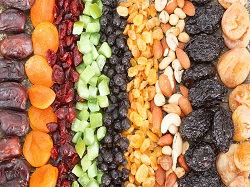At a certain point, each production method encounters the problem of moisture. The causes of moisture will vary widely and therefore the consequences of moisture are usually terribly completely different. However, the answer continually comes all the way down to an equivalent thing: remove the maximum amount moisture as possible. Drying or blow-off solution will prevent a lot of your time, energy and cash.
Possible causes of moisture?
The causes of moisture formation will vary widely. Our expertise shows that these causes are often divided into 3 broad classes:
- Cooling – several product are cooled. Typically because the last step during a sterilization or pasteurization method. Water is usually used for this purpose, leaving water droplets on the product. For example: prepared meals, cans, pet food, other examples are extrusion of plastics or rubbers.
- Cleaning – After production, the product are usually cleansed, washed or rinsed. Once again, water droplets remain behind. For example: beer, jam, sauces, and soft drinks.
- Steam – To sleeve products, they are often placed in a steam tunnel. The excess water must be removed. For example: fruit juices.
Possible problems due to moisture?
- Contaminated environment – First of all, moisture contaminates the space in which the production process takes place. Moisture is difficult to control. Especially in places where hygiene is of great importance, (polluted) water can make the whole environment dirty and dangerous (slippery).
- Ink spill – Printing on damp products is not possible. Many products require a production date or an expiry date. As long as the product is still damp, the inkjet codes will run out and become illegible.
- Non-adhesive labels – Even if you want to stick labels on the products, this will not work as long as they are damp. The glue from the labels can only stick on completely dry surfaces.
- Damaged machines – After all, many (packaging) machines are not resistant to water. Wet products can leave moisture in your machine and cause it to break down faster.
- Failing control equipment – Production processes are often checked at different times and on different parameters (such as speed, weight, etc.). The cameras, metering cells and different equipment used for this purpose sometimes don’t perform properly once the product remains coated with water droplets. Or the equipment could sustain water damage.
- Mould formation – Food is often packed in plastic. If the product is still wet, the moisture evaporates and mould can form.
- Cracking cardboard – Another ordinarily used method of packaging is cardboard. Cardboard, too, isn’t resistant to water and often tears when it gets wet.
We at KERONE have a team of experts to help you with your need for drying technologies in various products range from our wide experience.

